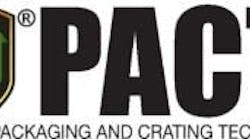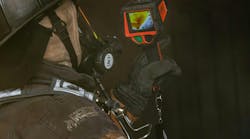In Mississippi, the Forestry Commission has been charged as the agency to administer the Federal Excess Personal Property (FEPP) program. Over the last several years, over 800 vehicles, from pickups to tractor-trailer tankers, have been transferred to fire departments in the state. In addition, pumps, generators and other hardware have been included in this program. Many innovations have been generated as a result and state fire departments now provide significantly improved services to their protection areas. A number of fire protection districts have been formed with this equipment and there has been a consequent reduction in insurance rates in the areas.
The Forestry Commission, while having manpower and equipment in every county of the state, relies on municipal and rural fire departments to help with forest, urban interface and other vegetation fire protection. There is an active FireWise program in the state along with various other educational activities to prevent fires and to mitigate any fire that does occur.
In addition to fire prevention and suppression operations, the Forestry Commission has other responsibilities dealing with tree farms, state and national forest lands, and protected forest areas. In 2001, the Forestry Commission began conducting prescribed burns under the National Fire Plan grants. These burns are located near or adjacent to urban developments, communities or clusters of houses in rural areas. The idea is to reduce the fire load near built-up properties and prevent fire spread. Aside from the normal risks involved with prescribed burning, we also had to address ways to reduce the impacts of traditional plowed or pushed fire lines.
The typical response to a fire or at a prescribed burn location was to simply take a small bulldozer and plow a firebreak. This sometimes involved a cultivated field, someone’s lawn or an area in which the bulldozer did as much damage as the approaching fire. Clearly, there was a need for alternative means of preventing fire spread and minimizing damage to the area. One solution is to use high-expansion foam.
A vehicle from the FEPP program was overhauled, modified and equipped with a high-expansion foam system. A small pump, tank and nozzle system is ideal for use with the Federal Excess Personal Property HMMWV (“HumVee”), which was converted into a standard Type 6 wildland fire engine. The four-wheel-drive, off-road capability of these vehicles is well known. The HMMWV carries 200 gallons of water and up to 10 gallons of foam concentrate. The high-expansion foam system utilized produces an expansion ratio of approximately 750:1 or 750 gallons of foam to one gallon of concentrate and water. Driving at a speed of 5 to 7 mph, the system can lay down a foam barrier that acts as a fireline approximately a half-mile in length.
This system is used around homes or environmentally sensitive areas so that the ground is not disturbed. On steep slopes, the system can be parked at the top of a hill and the foam simply flows downhill, creating an effective firebreak as it moves. If there is a high wind or for other circumstances, the expansion ratio may be changed to produce a denser foam.
This innovative combination of a HMMWV and a high-expansion foam system has great potential to safely do a better job, cheaper, faster and with a minimum of manpower.
Jon Wallace is the Federal Excess Personal Property (FEPP) coordinator for the Mississippi Forestry Commission. A.K. Rosenhan, PE, MIFireE, is the fire services coordinator for Oktibbeha County, MS.





